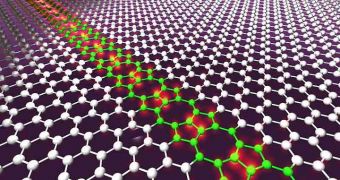Scientists based at the University of South Florida (USF) have recently developed a new approach to handling the word “defect.” Generally, most people think about a flaw that needs fixing when they hear this word, but the team says that this should not necessarily be the case. In their research, they artificially created a flaw in an atom-thick carbon compound known as graphene, which is bound to bring forth a new age of innovation in many fields, the US National Science Foundation (NSF) reports.
The development of future electronic devices is currently plagued by an important challenge, and namely the fact that the silicon-based materials everyone is using are beginning to show their limits. Therefore, replacements need to be found rapidly, and many research groups have turned their attention to graphene. The compound stands out from the crowd through its amazing physical and chemical properties, the USF team reveals. What its experts had to do was basically figure out a way of introducing defects into graphene sheets, a feat that others failed to accomplish.
Previous attempts at producing defects in graphene sheets have either proven to be inconsistent, or resulted in nanoribbons and sheets that only had their edges laden with defects. The central regions remained undisturbed. The USF team, which was led by professors Matthias Batzill and Ivan Oleynik, found a new method of extending graphene defects throughout a sheet. Their technique is detailed in March 29 issue of the esteemed scientific publication Nature Nanotechnology. The end result is the introduction of octagonal and pentagonal carbon rings on perfect graphene sheets.
These disturbances act like quasi-one-dimensional metallic wires, which can easily conduct electrical current. This is the main trait that the material needs to exhibit, if it is to set the foundation of a new generation of advanced electronics, that would operate both faster and more efficiently than their predecessors. The USF group hopes that its discovery will be used in the not-too-distant future, to create new nanoscale device, or even advanced chips and microprocessors.

 14 DAY TRIAL //
14 DAY TRIAL //